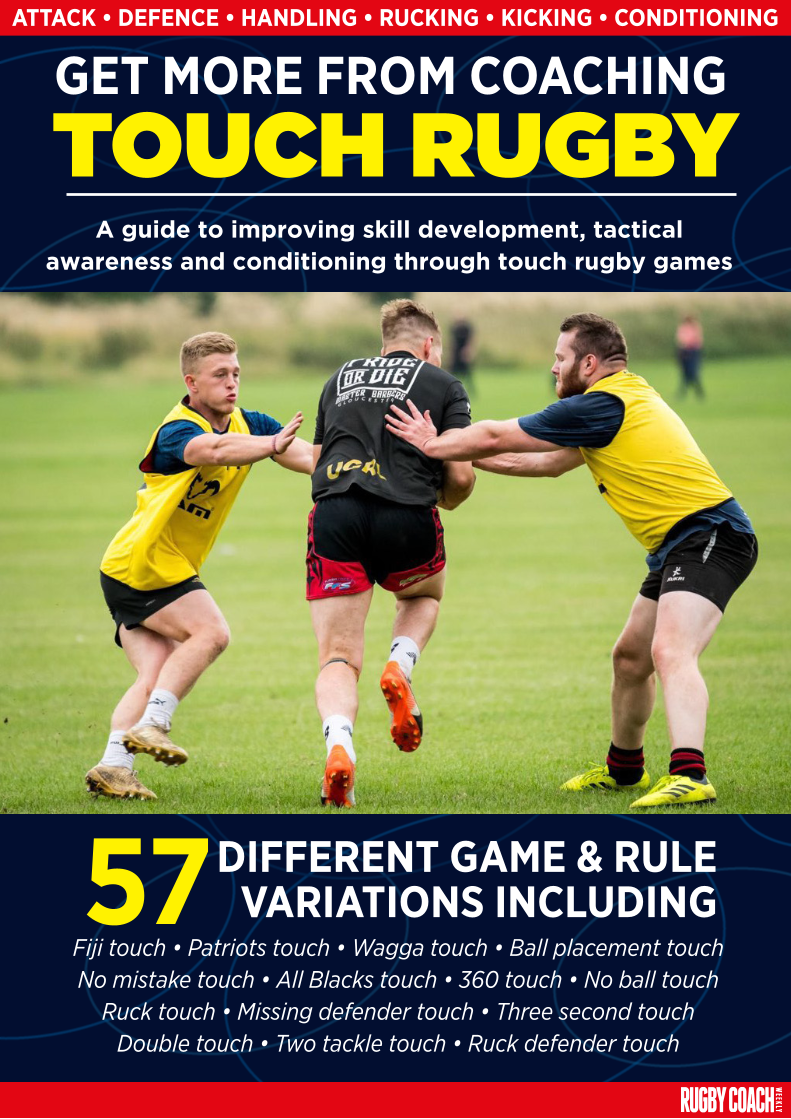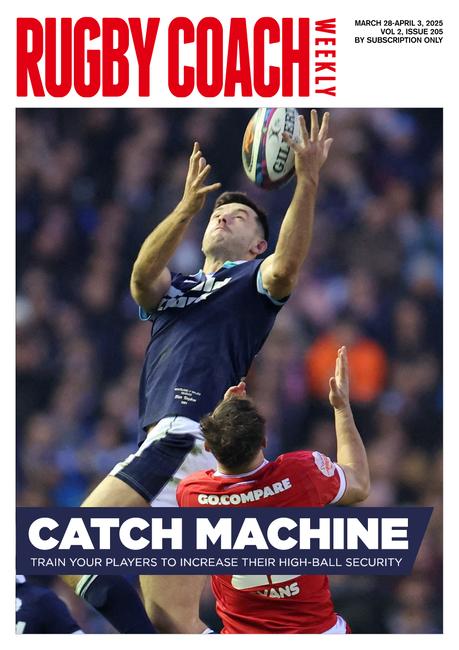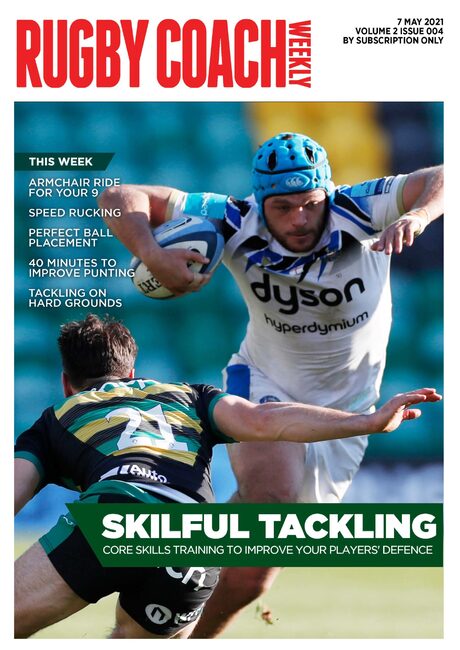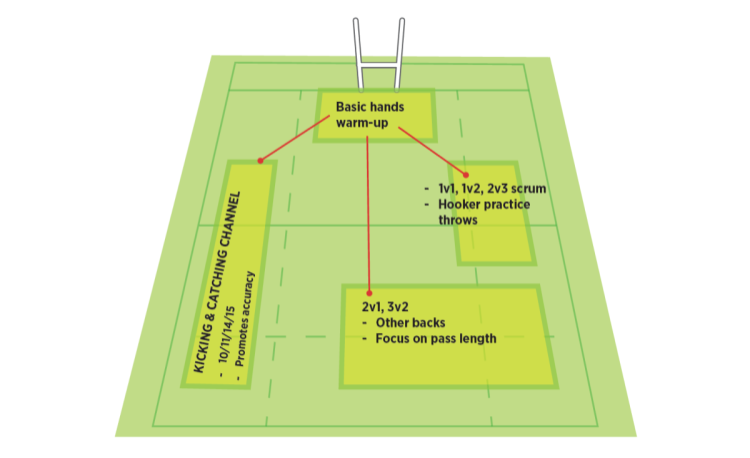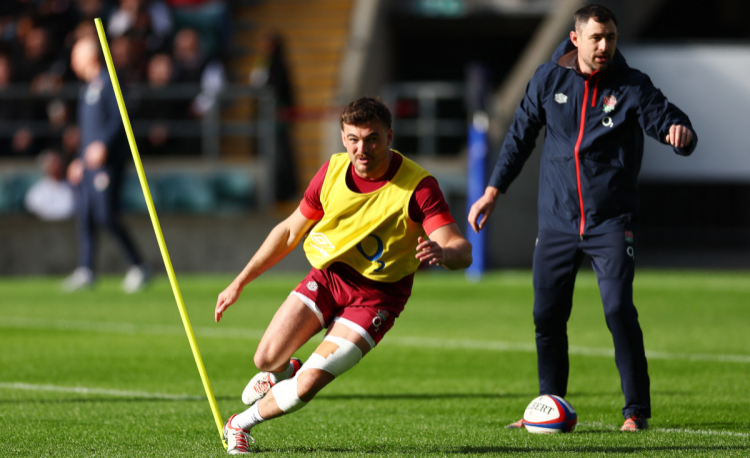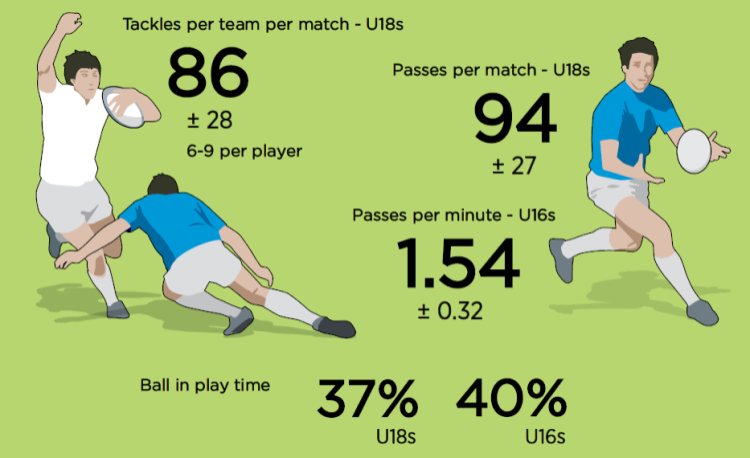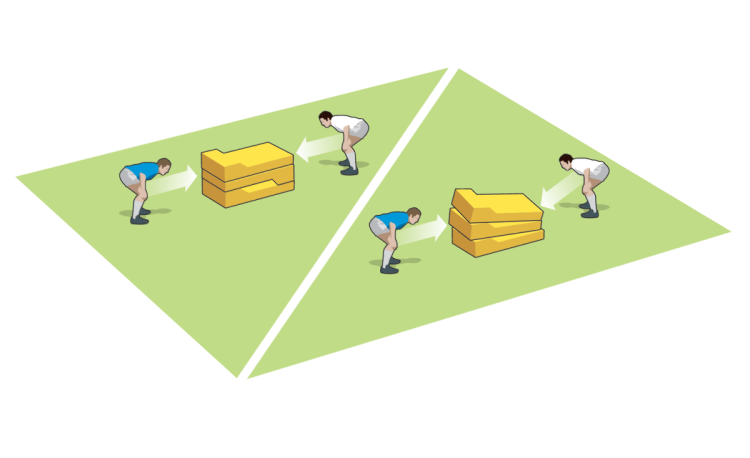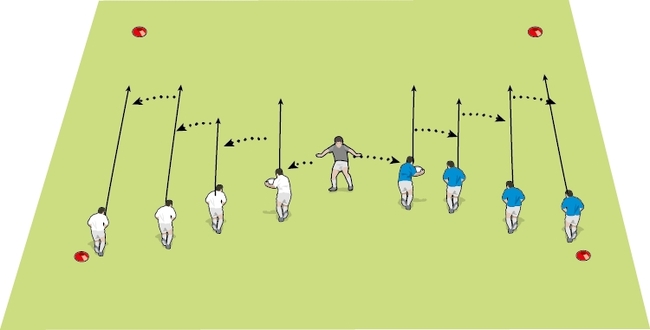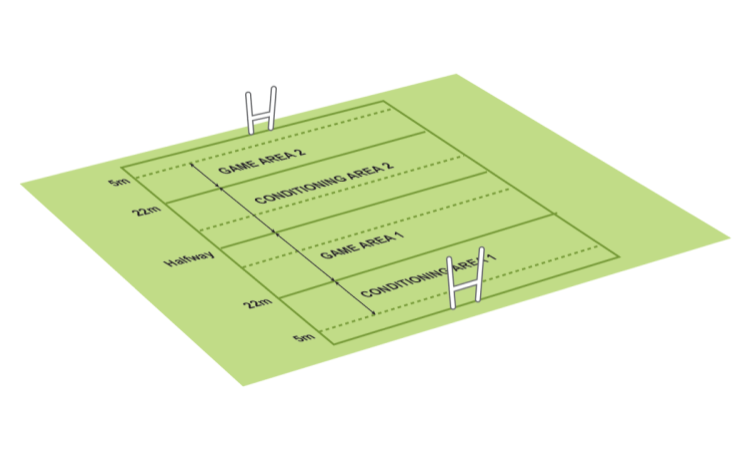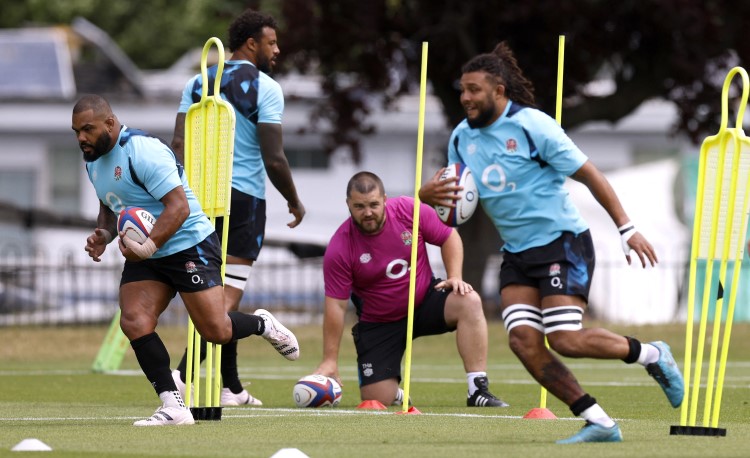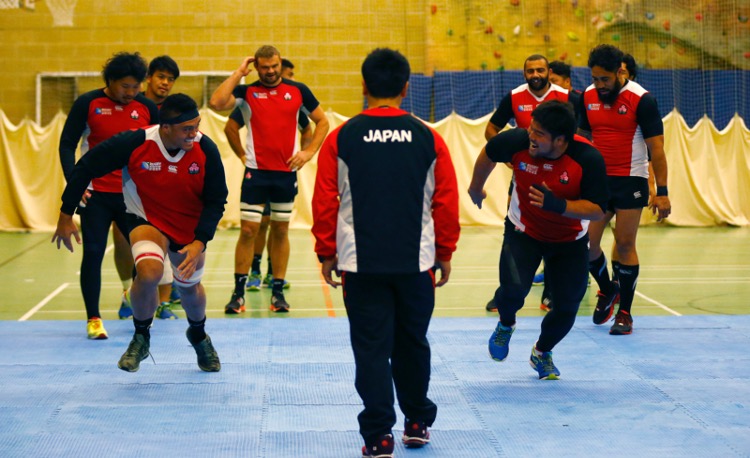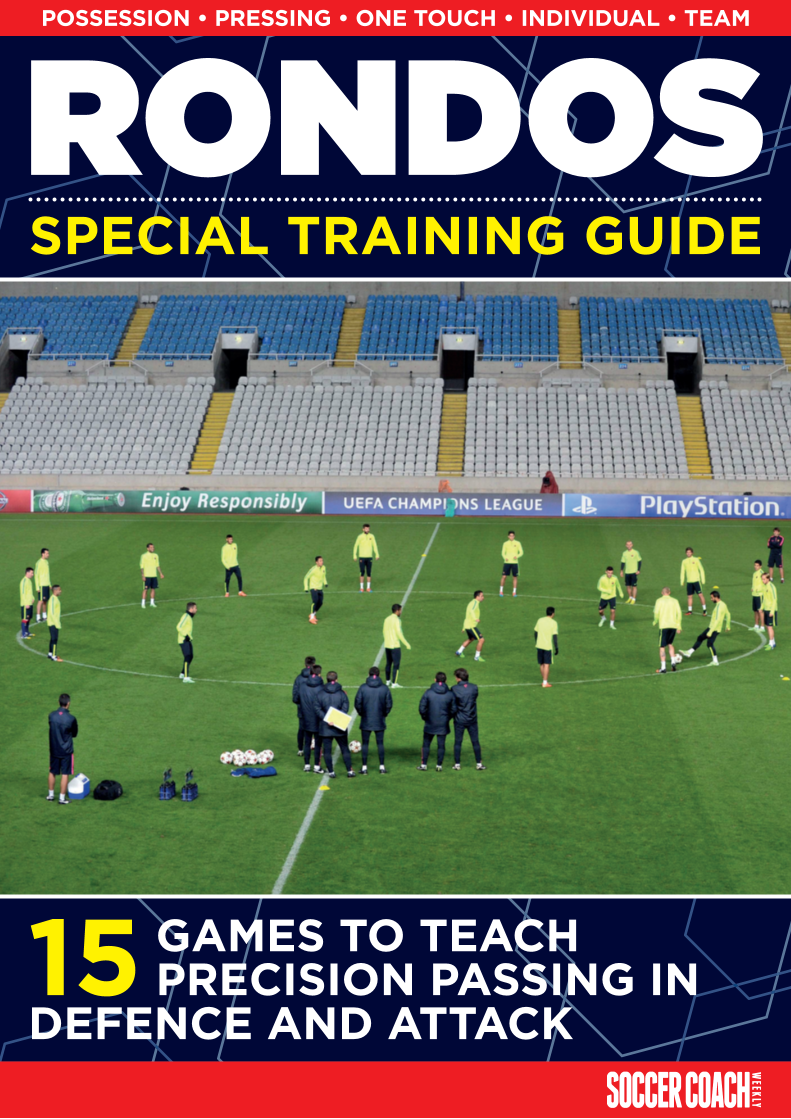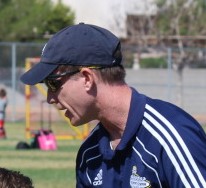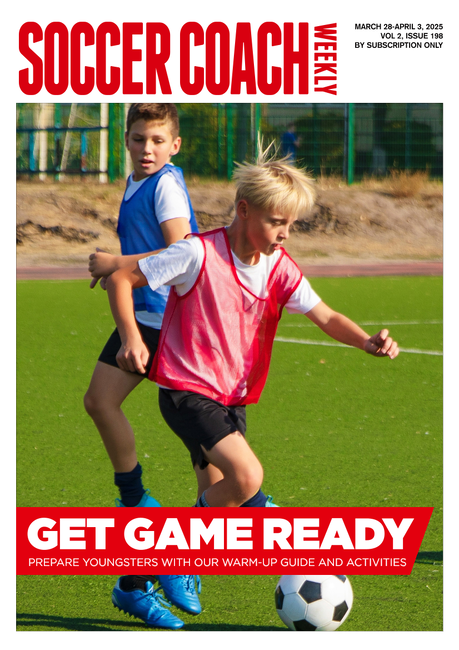Rugby coaching tips for muscle spasm and ankle injuries
Fitness & Conditioningby Dan Cottrell
Muscle spasms
Muscle spasms are different to cramp and are caused by rapid and sustained contraction of muscles.Muscle spasms usually affect the smaller and deeper postural muscles, although the larger surface muscles can also go into spasm. It is a common occurrence in back muscles, especially the lumbar spine.
Rugby forwards are prone to low back pain caused by spasm of the muscles close to the spine.
Symptoms
Pain on movement is the most obvious symptom. Usually there is a comfortable position to sit or stand in to minimise the pain.
If the lower back is the problem then "crook lying" is usually the most comfortable position as the low back muscles are not having to work and the rotation of the pelvis by bending the knees alleviates the stress at the lumbar spine (see picture).

Treatment
Before undertaking treatment, it is essential to identify the injury as a muscle spasm and not a tear, slipped disk or crushed nerve. A therapist should be able to diagnose, treat and prescribe rehabilitation.
Treatment of a muscle spasm involves the application of heat to the area. Lots of massage also works wonders. Spasms often occur with the more serious conditions of a slipped vertebral disk, and this must only be treated by a professional.
Overcoming ankle injuries
A common ankle injury is a strained or torn anterior talo-fibular ligament, which occurs when the foot turns inwards under force.Symptoms
Weight-bearing activities such as walking are painful, with swelling and instability being the most noticeable symptoms. The degree of pain is dependent on the degree of damage.
Physiotherapists will grade the damage from a sprain (Grade 0) to minor ligament tear (Grade I), partial rupture (Grade II) and, ultimately, a complete tear (Grade III).
A physiotherapist will be able to assess the degree of damage once the primary symptoms (swelling and pain) have reduced.
Treatment
The immediate treatment for an ankle injury is RICE. The primary function of this treatment is to reduce swelling and pain. When these are reduced you can start remedial rehabilitation.
When the injury occurs, do not remove the boot/sock of the player. But, instead, pack the ice around it as much as possible and put a compression bandage around the foot and boot. The boot helps to give compression and reduce the swelling.
To help improve your players' rugby fitness levels, click here to order a copy of Rocket Rugby.
Click here for more rugby coaching tips to help relieve other common rugby injuries.
Newsletter Sign Up
Coaches Testimonials
Subscribe Today
Be a more effective, more successful rugby coach
In a recent survey 89% of subscribers said Rugby Coach Weekly makes them more confident, 91% said Rugby Coach Weekly makes them a more effective coach and 93% said Rugby Coach Weekly makes them more inspired.
Get Weekly Inspiration
All the latest techniques and approaches
Rugby Coach Weekly offers proven and easy to use rugby drills, coaching sessions, practice plans, small-sided games, warm-ups, training tips and advice.
We've been at the cutting edge of rugby coaching since we launched in 2005, creating resources for the grassroots youth coach, following best practice from around the world and insights from the professional game.

